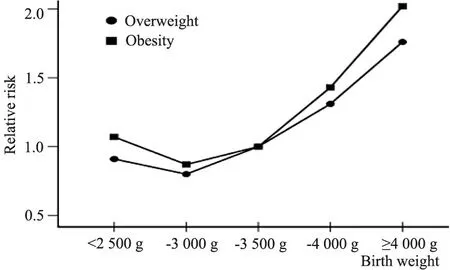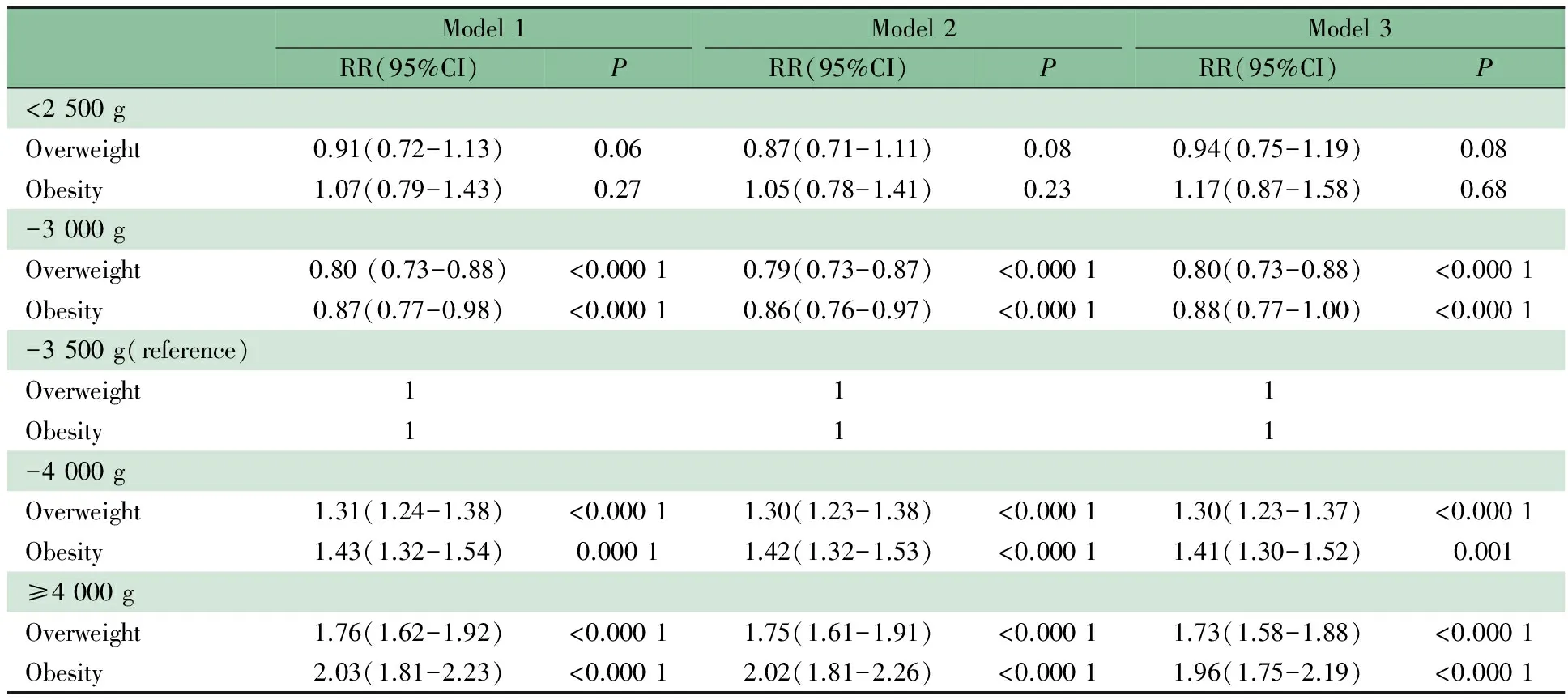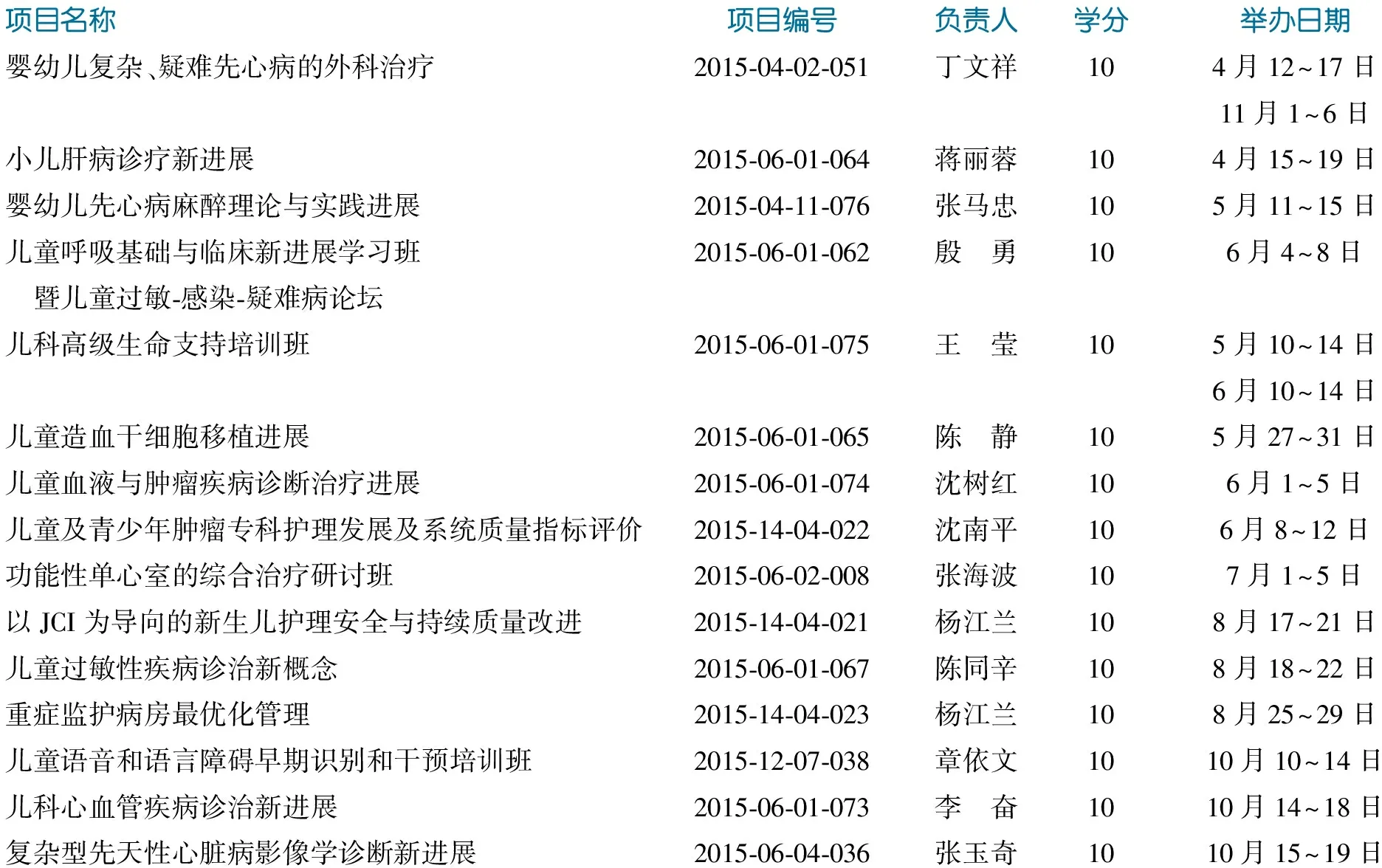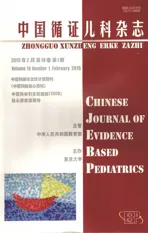出生体重与5至8岁儿童超重和肥胖关联的队列研究
2015-04-21宋艾云范玉娟李雪松范晓方任凤东沈春芳沈甲乙
张 钰 宋艾云 范玉娟 李雪松 范晓方 任凤东 郑 徽 沈春芳 沈甲乙
宋玉萍1 任国光1 张正球1 赵燕萍2 蒋良华3 张金伟4 储寄志5 叶为民6 马应忠7
姚 红8 杨玉明9 曹永其10顾 昊11林建良12赵伟忠13朱洪其14李志勇15杨 杰16
程 佳16 杨架林1
·论著·
出生体重与5至8岁儿童超重和肥胖关联的队列研究
张 钰1,17宋艾云1,17范玉娟1李雪松1范晓方1任凤东1郑 徽1沈春芳1沈甲乙1
宋玉萍1任国光1张正球1赵燕萍2蒋良华3张金伟4储寄志5叶为民6马应忠7
姚 红8杨玉明9曹永其10顾 昊11林建良12赵伟忠13朱洪其14李志勇15杨 杰16
程 佳16杨架林1
目的 以回顾性队列研究探讨出生体重与5~8岁儿童超重和肥胖的关系。方法 利用上海市闵行区所辖的13家社区卫生服务中心3~12岁儿童的体格检查数据库,截取5~8岁儿童的身高和体重数据进行分析。体检时行问卷调查生育史、出生体重、妊娠情况和出生后喂养史。按照出生体重分为:<2 500 g(低出生体重儿)、~3 000 g、~3 500 g、~4 000 g和≥4 000 g组(巨大儿)。采用多元logistics分析评估出生体重与5~8岁儿童超重和肥胖的关系,并调整相关因素的影响。结果 99 897名5~8岁儿童进入分析,超重发生率为10.1%,肥胖发生率为5.0%。①1.4%的儿童为低出生体重,7.3%为巨大儿;出生体重 <2 500 g、~3 000 g、~3 500 g、 ~3 500 g、~4 000 g和≥4 000 g组超重检出率分别为8.4%、7.6%、9.2%、11.5%和14.5%;肥胖检出率分别为4.7%、3.9%、4.4%、5.9%和7.9%。②简单相关分析发现,~3 500 g、~4 000 g和≥4 000 g组出生体重与儿童体重呈正相关(P<0.000 1),在调整了性别、年龄、身高、分娩史、孕周、喂养史和身高后,仍具有显著相关性。③与出生体重~3 500 g组相比,~4 000 g组超重和肥胖的发生率增加31%和43%,~4 500 g组超重和肥胖的发生率增加76%和103%;~3 000 g组发生超重和肥胖的风险最低(RR=0.80, 95%CI:0.73~0.88,P<0.000 1;RR=0.87, 95%CI: 0.77~0.98,P<0.000 1),调整了年龄、性别、孕周和产式等因素后,仍具有相关性;5、6、7和8岁儿童~4 000 g和≥4 000 g组发生超重和肥胖的风险相近;<2 500 g组肥胖的风险RR为1.07(95%CI: 0.79~1.43),P= 0.27。结论 出生体重对5~8岁儿童超重和肥胖的影响呈非线性关系。出生体重>3 500 g儿童5~8岁超重和肥胖的风险显著增高。
出生体重; 超重; 肥胖; 儿童
超重和肥胖在全球呈快速增长趋势。在美国过去10年中,在儿童和成人中肥胖人数剧增[1]。儿童肥胖在全球尤其是发展中国家快速增加[2];在中国超重和肥胖在6~18岁儿童青少年的发生率分别为12%和6%[3]。现有研究证实,肥胖是2型糖尿病[4]、高血压[5]、心血管疾病[6]、卒中[7]、呼吸暂停[8]和非酒精性脂肪肝[9]的危险因素。
许多疾病可追溯至出生,儿童体重与出生体重是否有关联非常值得关注。有多项观察性研究探讨出生体重和儿童超重和肥胖的关系。欧洲IDEFICS研究结果提示巨大儿(出生体重≥4 000 g)是儿童发生超重和肥胖的独立相关因素[10]。Maureen等[11]研究发现,与正常体重新生儿相比,极低出生体重儿8~14岁发生肥胖的风险增加。国内关于出生体重对肥胖的影响亦有报道[12,13],分别纳入10 221名和193名研究对象,样本量较小,也缺乏某一地区全样本的研究,两者的关联性仍需大样本研究明确。
1 方法
1.1 研究设计 本研究为回顾性队列研究。利用上海市闵行区儿童体检数据库,截取其中5~8周岁儿童末次体检的数据进入本文分析,以多因素分析出生体重与儿童期超重和肥胖的关系。
1.2 儿童体检数据库 上海市闵行区所辖的全部13家社区卫生服务中心3~12岁儿童每年行1次体检,上海市闵行区户籍的儿童全部纳入体检范围。2001年以来的体检数据编码后,由所在社区卫生服务中心儿童保健部门人员双份录入闵行区卫生计划生育委员会(卫计委)儿童体检数据库,并交叉核对。
1.3 数据剔除原则 ①出生体重数据缺失者;②末次体检体重和身高数据缺失者;③体检报告中有重要脏器慢性疾病(先天性心脏病和甲状腺功能减低等)、肢体残疾和智力障碍儿童的数据;④身高和体重>+4s和<-4s的数据。
1.4 数据采集 由13家社区卫生服务中心专业人员按照标准方法[14]测量身高和体重,计算BMI,并于体检当日行问卷调查,问卷由闵行区卫计委儿童保健研究部门统一设计内容并发放,内容包括:生育史、出生体重、妊娠情况、出生后喂养史、智力情况和是否患有重要脏器的慢性疾病。由儿童家长填写完毕后统一当场回收。
1.5 质量控制 ①13家社区卫生中心的测量工具由上海市闵行区卫计委统一采购,身高体重秤型号统一(RGZ-120Ⅱ,上海东方衡器有限公司),定期进行校正;②社区卫生中心儿童保健部门的测量人员均经统一培训,闵行区卫计委每年还定期进行专业培训。
1.6 诊断标准 根据中国肥胖问题工作组的标准[15],超重为儿童BMI在同年龄同性别P85~P95;肥胖为BMI≥同年龄同性别人群的P95。
1.7 分组 按出生体重分为:<2 500 g组(低出生体重儿)、~3 000 g组、~3 500 g组、~4 000 g组和≥4 000 g组(巨大儿)。
2 结果
2.1 一般情况 截止2011年12月儿童体检数据库共采集137 491名上海市闵行区户籍5~8周岁儿童的体检数据,其中8 252名(6.0%)儿童遗漏出生体重或无法辨认,28 014名(20.4%)儿童末次体检身高或体重数据缺失,527名(0.4%)儿童有重要脏器慢性疾病、肢体残疾和智力障碍等,801名(0.6%)身高和体重极端数据,予以剔除。37 594名剔除儿童数据中,5、6、7和8岁分别占27.1%(9 185/33 895)、27.3%(9 441/34 589)、27.0%(9 613/34 682)和28.0%(9 613/34 325),差异无统计学意义(P>0.05)。本文队列总体采集数据来自于自然人口户籍,剔除数据在各年龄段内分布是均衡的,说明队列总体数据分布也是均衡的。99 897名儿童的体检数据进入本文分析。
5组儿童的一般情况如表1所示,<2 500 g组出生身长和孕周较低,<2 500 g组和≥4 000 g组自然分娩比例分别为1.1%和1.9%;5组母乳喂养率相近。
2.2 超重和肥胖检出率 99 897名儿童中,超重检出率为10.1%,肥胖检出率为5.0%。<2 500 g、~3 000 g、~3 500 、 ~4 000 g和≥4 000 g组的超重检出率分别为8.3%(115/1 379)、7.6%(865/11 448)、9.2%(4 530/49 289)、11.5%(3 504/30 499)和14.5%(1 057/7 282),肥胖检出率分别为4.6%(64/1 379)、3.9%(443/11 448)、4.3%(2 144/49 289)、5.9%(1 809/30 499)和7.9%(576/7 282)。
2.3 出生体重与超重、肥胖的关联 简单相关分析发现,<2 500 g和 ~3 000 g组的出生体重与儿童体重无显著相关性(P均>0.05);~3 500 g、~4 000 g和≥4 000 g组出生体重与儿童体重呈弱正相关(P<0.000 1),在调整了性别、年龄、身高、分娩史、孕周、喂养史和身高后,仍具有显著相关性(表2)。

表1 99 897名体检数据的一般情况(%)]

表2 不同出生体重与体重的相关性
Notes BH: birth height; DM: develivery model; PW: pregnant week; BF: breast feeding
~3 500 g组占研究人群的49.3%,作为参照组,RR值为1。出生体重对5~8岁儿童超重和肥胖影响如图1所示,呈现<2 500 g、~4 000 g、≥4 000 g组超重和肥胖RR值增高的趋势。表3显示,与出生体重~3 500 g组相比,~4 000 g组超重和肥胖的风险增加31%和43%,≥4 000 g组超重和肥胖的风险增加76%和103%,差异均有统计学意义(P<0.000 1);~3 000 g组发生超重和肥胖的风险最低(RR=0.80, 95%CI:0.73~0.88,P<0.000 1; RR=0.87, 95%CI:0.77~0.98,P<0.000 1),在调整了年龄、性别、孕周、产式、身高和喂养方式等因素后,仍具有显著关联;<2 500 g组肥胖的风险RR为1.07(95%CI:0.79~1.43),差异无统计学意义(P= 0.27)。

图2 不同出生体重组儿童5~8岁超重和肥胖的相对危险度
Fig 2 The RR of obesity and overweight in different birth weight groups
Notes RR was calculated without adjustment

表3 不同出生体重与5~8岁儿童超重和肥胖风险的关联性
Notes Model 1: unadjusted; model 2: adjusted for age, sex, birth height, pregnant week, delivery models; model 3: based on model 2 further adjusted for current height, breast feeding
2.4 出生体重与超重和肥胖关联性的年龄分层分析表3显示,~4 000 g、≥4 000 g组超重和肥胖的RR值有统计学意义,按年龄行分层分析。表4显示,5、6、7和8岁组超重和肥胖的RR值,~4 000 g组分别为1.29~1.31和1.39~1.41,≥4 000 g组分别为1.72~1.74和1.95~1.97。

表4 -4 000 g和≥4 000 g组儿童超重和肥胖风险关联的年龄分层分析
Notes The RR was adjusted for age, sex, birthheight, pregnant week, delivery models,current height and breast feeding
3 讨论
既往出生体重和儿童超重和肥胖的研究人群选择,多以随机选取人群,样本量小且代表性不强;全样本人群和整群抽样的方法具有较好的代表性,本研究利用上海市闵行区卫计委儿童体检的数据库,基本涵盖了闵行区户籍的5~8岁儿童,进入分析的样本量达 99 897名。虽然本文为回顾性队列研究,但13家社区卫生服务中心均有指定的儿童保健部门,由统一经过培训的专业人员进行体格测量和数据采集。本研究剔除的数据占全部数据的27.4%,但在5、6、7和8岁中的比例相差不大(27.0%~28.0%),进入分析的数据仍具有较好代表性。
本研究显示低出生体重儿占1.4%,低于中国低出生体重儿的既往报道(4.8%~8.5%)[16]。一项来自Bangladeshi地区的出生队列研究发现低出生体重与生后疾病易感增加有关[17]。本研究占7.3%,随着经济发展,新生儿出生体重正逐年增加,在中国2006年的调查结果提示巨大儿的发生率达7%~8%,东部沿海地区高达10%[18]。有研究报道,高出生体重与肥胖[19,20]和代谢综合征发生风险增加有关[21]。
中国近年来成人和儿童肥胖和超重的流行情况日益加重[22,23]。中国学生体质健康监测体系(CNSSCH)调查发现超重和肥胖在中国7~12岁学生中分别为12.5%和8.5%[24,25]。本研究显示,上海市闵行地区5~8岁儿童中超重和肥胖的发生率分别为10.1%和5.0%,略低于上述调查结果,可能与本文调查儿童的年龄较小有关。
本研究发现,出生体重与儿童超重和肥胖的关系并非表现为线性关系,呈现高出生体重风险显著增大,低出生体重有风险增加的趋势;高出生体重是儿童超重和肥胖的危险因素,出生体重≥4 000 g,其发生超重和肥胖的RR值分别增加76%和103%。这与既往研究结果较为一致,欧洲IDEFICS研究提示巨大儿(出生体重≥4 000 g)是儿童发生超重(BMI在同年龄同性别的P85~P95)和肥胖(BMI≥同年龄同性别的P95)的独立相关因素[10]。李辉等[12]于2002年在北京抽取4城区35所小学10 221名7~8岁学生,结果发现巨大儿在儿童期的肥胖(≥1.2倍NCHS/WHO肥胖诊断界值)的发生率增加;Maureen等研究发现[11],与正常体重新生儿相比,巨大儿8~14岁发生肥胖的风险增加;阿根廷的一项研究显示,巨大儿与7~12岁超重(BMI在同年龄同性别的P85~P95)和肥胖(BMI≥同年龄同性别的P95)风险增加有关(RR= 2.48,95% CI:1.62~3.81)[26]。本研究进一步证实了高出生体重与肥胖的关联性,在5~8岁儿童就可出现超重和肥胖,且5~8岁各年龄发生超重和肥胖的风险相近,提示出生体重对儿童超重和肥胖的影响应更早被关注和预防。
多项研究在不同人群中有关低出生体重和超重和肥胖的关系。来自阿根廷的研究提示在7~12岁小学生中,低出生体重(<2 500 g)是肥胖和超重的保护性因素(RR=0.32 , 95%CI:0.16~0.63)[26]。美国的队列研究发现,与正常出生体重新生儿相比,极低出生体重(<1 500 g)患儿发生超重(包括肥胖)(BMI≥同年龄同性别的P90)的风险分别增加12%(8岁)和19%(14岁)(P=0.02)[20]。本文未分析极低出生体重儿与超重和肥胖的相关性,但低出生体重(<2 500 g)与5~8岁儿童肥胖存在趋向性,但差异无统计学意义,考虑可能与儿童年龄较小有关,有待于继续观察至青少年期和成人期明确。
本研究的不足之处和局限性:①本文未纳入分析的缺失数据占27.4%,可能对结果有一定影响;②既往研究表明,儿童肥胖还与营养过剩、不健康的生活饮食习惯、家庭收入、社会学校环境和基因有关[24,25],本研究未收集上述因素,结果可能存在一定偏倚;③观察儿童的年龄为5~8岁,仍需进一步随访至学龄期和青少年期,阐明出生体重与超重和肥胖的年龄关系。
结论,本研究发现在出生体重与5~8岁儿童肥胖和超重的风险呈非线性关系。出生体重>3 500 g与超重和肥胖的风险显著关联。
[1]Kelly T, Yang W, Chen CS, et al. Global burden of obesity in 2005 and projections to 2030. Int J Obes (Lond), 2008, 32(6):1431-1437
[2]Gupta N, Goel K, Shah P, et al. Childhood obesity in developing countries: epidemiology, determinants, and prevention. Endocr Rev, 2012,33(1):48-70
[3]Lum JM, Wang MC. Childhood overweight and obesity in China. FASEB J, 2008, 22(5): 1083
[4]Carnethon MR, Palaniappan LP, Burchfiel CM, et al. Serum insulin, obesity, and the incidence of type 2 diabetes in black and white adults: the atherosclerosis risk in communities study: 1987-1998. Diabetes Care, 2002, 25(8): 1358 - 1364
[5]Rahmouni K, Correia ML, Haynes WG, et al. Obesity-associated hypertension: new insights into mechanisms. Hypertension, 2005, 45(2): 9-14
[6]Poirier P, Giles TD, Bray GA, et al. Obesity and cardiovascular disease: pathophysiology, evaluation, and effect of weight loss: an update of the 1997 American Heart Association Scientific Statement on Obesity and Heart Disease from the Obesity Committee of the Council on Nutrition, Physical Activity, and Metabolism.Circulation, 2006, 113(6): 898-918
[7]Vemmos K, Ntaios G, Spengos K, et al. Association between obesity and mortality after acute first-ever stroke: the obesity-stroke paradox. Stroke, 2011, 42(1): 30-36
[8]Wolk R, Shamsuzzaman AS, Somers VK. Obesity, sleep apnea, and hypertension. Hypertension, 2003, 42(6): 1067-1074
[9]Fabbrini E, Sullivan S, Klein S. Obesity and nonalcoholic fatty liver disease: biochemical, metabolic, and clinical implications. Hepatology, 2010, 51(2): 679-689
[10]Sparano S, Ahrens W, De Henauw S, et al. Being macrosomic at birth is an independent predictor of overweight in children: results from the IDEFICS study.. Matern Child Health J, 2013, 17(8): 1373-1381
[11]Hack M, Schluchter M, Andreias L, et al. Change in prevalence of chronic conditions between childhood and adolescence among extremely low-birth-weight children. JAMA, 2011, 306(4):391-401
[12]Li H(李辉),Yu Y,Xia XL. Birth weight and childhood obesity.Chinese Journal of Child Health Care(中国儿童保健杂志),2002,10(3):73-74
[13]Hua Q(华琦), Tan J,Liu CH, et al.A cohort study on the correlation between birth weight, simple obesity, blood lipids, blood glucose and blood pressure from childhood to adolescence.Chin J Inter Med(中华内科杂志),2007,46(11):923-925
[14]中华人民共和国教育部,等主编.中国学生体质与健康调研报告.北京高等教育出版社.2000
[15]Group of China Obesity Task Force(中国肥胖问题工作组). Body mass index reference norm for screening overweight and obesity in Chinese children and adolescents. Chin J Epidemiol (中华流行病学杂志),2004,25 (2) : 97-102
[16]Lin LM(林良明),Liu YL, Zhang XL, et al.Sampling survey on low-birth weight in China in 1998.Chin J Prev Med(中华预防医学杂志),2002,36(3):149-153
[17]Raqib R, Alam DS, Sarker P, et al. Low birth weight is associated with altered immune function in rural Bangladeshi children: a birth cohort study. Am J Clin Nutr, 2007, 85(3): 845-852
[18]Yu DM(于冬梅),Zhai FY,Zhao LY, et al. Incidence of fetal macrosomia and influencing factors in China in 2006. Chinese Journal of Child Health Care(中国儿童保健杂志), 2008,16(1): 11-13
[19]Vohr BR, Lipsitt LP, Oh W. Somatic growth of children of diabetic mothers with reference to birth sizes. J Pediatr, 1980, 97(2):196-199
[20]Schaefer-Graf UM, Pawliczak J, Passow D, et al. Birth weight and parental BMI predict overweight in children from mothers with gestational diabetes. Diabetes Care, 2005, 28(7):1745-1750
[21]Boney CM, Verma A, Tucker R,et al. Metabolic syndrome in childhood: association with birth weight, maternal obesity, and gestational diabetes mellitus.. Pediatrics, 2005, 115(3):290-296
[22]Chen CM(陈春明). Timely actions on childhood obesity. Chin J Epidemiol (中华流行病学杂志), 2004, 25(2):95-96
[23]Ji CY(季成叶), Sun JL, Chen TJ. Dynamic analysis on the prevalence of obesity and overweight school-age children and adolescents in recent 15 years in China. Chin J Epidemiol (中华流行病学杂志), 2004, 25(2): 103-108
[24]Ji CY, Working Group on Obesity in China.Report on childhood obesity in China (1)--body mass index reference for screening overweight and obesity in Chinese school-age children. Biomed Environ Sci, 2005,18(6):390-400.
[25]Wang Y, Monteiro C, Popkin BM. Trends of obesity and underweight in older children and adolescents in the United States, Brazil, China, and Russia. Am J Clin Nutr, 2002,75(6):971-977
[26]Hirschler V, Bugna J, Roque M, et al. Does low birth weight predict obesity/overweight and metabolic syndrome in elementary school children? Arch Med Res, 2008, 39(8): 796-802
(本文编辑:丁俊杰)
Cohort study on the association of overweight and obesity among children aged 5 to 8 years with birth weight
ZHANGYu1,17,SONGAi-yun1,17,FANYu-juan1,LIXue-song1,FANGXiao-fang1,RENFeng-dong1,ZHENGHui1,SHENChun-fang1,SHENJia-yi1,SONGYu-ping1,RENGuo-guang1,ZHANGZheng-qiu1,ZHAOYan-ping2,JIANGLiang-hua3,ZHANGJin-wei4,CHUJi-zhi5,YEWei-min6,MAYing-zhong7,YAOHong8,YANGYu-ming9,CAOYong-qi10,GUHao11,LINJian-liang12,ZHAOWei-zhong13,ZHUHong-qi14,LIZhi-yong15,YANGJie16,CHENGJia16,YANGJia-lin1(1MinhangHospital,FudanUniversity,Shanghai201199; 2CenterforDiseaseControlandPreventionofMinhangDistrict,Shanghai201199; 3JiangchuanCommunityHealthServiceCenterofMinhangDistrict,Shanghai200240; 4LongbaiCommunityHealthServiceCenterofMinhangDistrict,Shanghai201103; 5GumeiCommunityHealthServiceCenterofMinhangDistrict,Shanghai201102; 6XinhongCommunityHealthServiceCenterofMinhangDistrict,Shanghai201106; 7HuacaoCommunityHealthServiceCenterofMinhangDistrict,Shanghai201105; 8HongqiaoCommunityHealthServiceCenterofMinhangDistrict,Shanghai201103; 9QibaoCommunityHealthServiceCenterofMinhangDistrict,Shanghai201101; 10MeilongCommunityHealthServiceCenterofMinhangDistrict,Shanghai201104; 11XinzhuangCommunityHealthServiceCenterofMinhangDistrict,Shanghai201199; 12ZhuanqiaoCommunityHealthServiceCenterofMinhangDistrict,Shanghai201108; 13MaqiaoCommunityHealthServiceCenterofMinhangDistrict,Shanghai201111; 14WujingCommunityHealthServiceCenterofMinhangDistrict,Shanghai200241; 15PujiangCommunityHealthServiceCenterofMinhangDistrict,Shanghai201112; 16MinhangDistrictMinistryofHealth,Shanghai201199,China; 17Co-firstauthor)
YANG Jia-lin,E-mail:Jialinyang2002@163.com
ObjectiveBirth weight has effect not only on growth of infants but also on later life. Every year, children will be given routine examination by government at community health service centers in Minhang District in Shanghai, China. To observe the effect of birth weight on risk of overweight and obesity among children aged 5 to 8 years in China.MethodsA retrospective longitudinal study was performed. Birth weight, current height and weight, and other anthropometric data of children were obtained from the community health service centers. ResultsAmong 99 897 subjects, 10.1% of the children were overweighted and 5.0% were obese. Of all the children, 1.4% had low birth weight (birth weight <2 500 g) and 7.3% had high birth weight(birth weight≥4 000 g). The percentages of overweight were 8.4%, 7.6%, 9.2%, 11.5%, 14.5%, respectively, and the percentages of obesity were 4.7%, 3.9%, 4.3%, 5.9%, 7.9% respectively, across the birth weight categories:<2 500 g, -2 500 g, -3 000 g, -3 500 g, -4 000 g, ≥4 000 g. Comparing with the control group which was defined the birth weight as more than or equal to 3 000 g and less than 3 500 g, the risk ratio of the children with birth weight between 3 500 and 4 000 g for overweight increased 31% and for obesity increased 43%(RR=1.31, 95%CI:1.24-1.38,P<0.000 1; RR=1.43, 95%CI:1.32-1.54,P= 0.000 1, respectively) and the risk ratio of the children with birth weight equal to or more than 4 000 g for overweight increased 76% and for obesity increased 103%(RR=1.76, 95%CI:1.62-1.92,P<0.000 1;RR=2.03, 95%CI:1.81-2.23,P<0.000 1, respectively). The association was persisted after adjustment of the confounders including age, sex, birth height, pregnant week, delivery models, current height and breast feeding. The RRs of overweight and obesity were close among children aged 5, 6, 7, 8 years with birth weight of -4 000 g and ≥4 000 g. The children with birth weight more than or equal to 2 500 g and less than 3 000 g had no risk for overweight and obesity when they were 5 to 8 years old(RR=0.80, 95%CI, 0.73-0.88,P<0.000 1; RR=0.87, 95%CI:0.77-0.98,P<0.000 1), compared with the control group. The risk ratio for obesity increased to 1.07%-1.17% when birth weight decreased to less than 2 500 g, although thePvalues were not significant (crude RR=1.07, 95%CI:0.79-1.43,P= 0.27, adjusted RR=1.17, 95%CI:0.87-1.58,P= 0.68, respectively.).ConclusionA non-linear relationship between birth weight and risk of overweight and obesity was found in the children aged 5-8 years in Shanghai, China. The children with high birth weight were at an increased risk to have overweight and obesity at school-age. The children with low birth weight had the tendency of obesity when they were at 5 to 8 years age.
Birth weight; Obesity; Overweight; Children

上海交通大学附属上海儿童医学中心2015年国家级继续医学教育项目(第一批)
上海市科委课题资助:114119b0400
1 复旦大学附属闵行医院 上海,201199;2 上海市闵行区疾病预防控制中心 上海,201199;3 上海市闵行区江川社区卫生服务中心 上海,200240;4 上海市闵行区龙柏社区卫生服务中心 上海,201103;5 上海市闵行区古美社区卫生服务中心 上海,201102;6 上海市闵行区新虹社区卫生服务中心 上海,201106;7 上海市闵行区华漕社区卫生服务中心 上海,201105;8 上海市闵行区虹桥社区卫生服务中心 上海,201103;9 上海市闵行区七宝社区卫生服务中心 上海,201101;10 上海市闵行区梅陇社区卫生服务中心 上海,201104;11 上海市闵行区莘庄社区卫生服务中心 上海,201199;12 上海市闵行区颛桥社区卫生服务中心 上海,201108;13 上海市闵行区马桥社区卫生服务中心 上海,201111;14 上海市闵行区吴泾社区卫生服务中心 上海,200241;15 上海市闵行区浦江社区卫生服务中心 上海,201112;16 上海市闵行区卫生计生委员会 上海,201199;17 共同第一作者
杨架林,E-mail:Jialinyang2002@163.com
10.3969/j.issn.1673-5501.2015.01.008
2014-10-03
2015-01-17)
